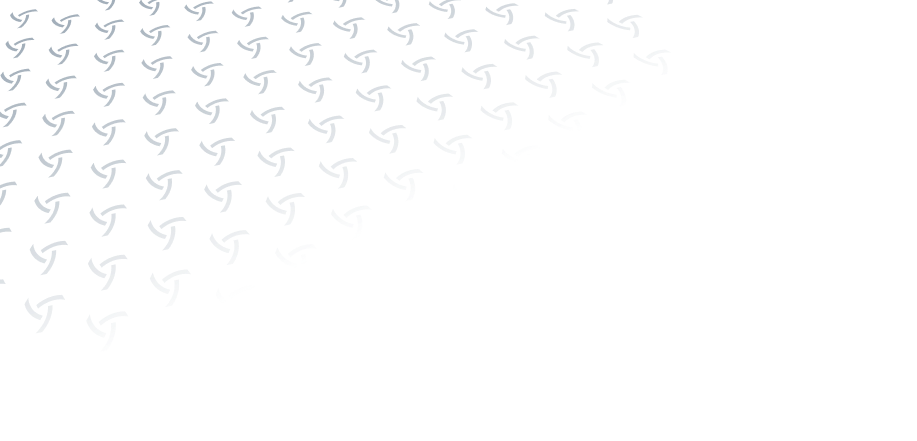Professor Bohuslav Přikryl, former rector of the University of Defense and a brigadier general in reserve, serves as the Vice President for Science and Research in the CSG Aerospace division, part of the CSG holding. In his position, he monitors the development of technologies and strives to identify which ones should be used in new products that will influence not only the military but the entire society.
You have long worked in the military academic environment and were the rector of the University of Defense. It is said that the military sector brings key innovations to society. Examples include information technology, the internet, jet and rocket propulsion. Is this still true in the 21st century?
Historically, the military sector was the source of many innovations. However, in the 21st century, its significance as an innovation generator is diminishing. Due to the extremely rapid progress in the commercial and academic spheres, this is reversing: The military is trying to apply commercial technologies to warfare. The commercial sector is faster in innovations, and the technologies that arise in it are more accessible. The commercial sector can also invest vast resources in innovations. An example of how the military utilizes commercial innovative technology is Elon Musk and his company SpaceX, specifically its Starlink communication satellite constellation, which found use in the Ukrainian conflict.
You often mention the terms breakthrough and disruptive technologies. How can they be defined, and what are they currently, in your opinion?
These are technologies that will change behaviors and patterns with an impact across a wide range of sectors, including the military. This won't happen instantly but over a period of five to twenty years. These technologies have been defined at the NATO and EU levels. On the list are big data, artificial intelligence, autonomous and robotic systems, space technologies, hypersonic technologies, quantum technologies, biotechnologies, and advanced materials. One more note: It is estimated that the disruptive effect for most of them will occur in five to ten years. For quantum technologies, biotechnologies, and advanced materials, it's ten to twenty years.
During your career, which breakthrough innovations, whether in the military or civilian environment, have you encountered?
At the turn of the 80s and 90s of the last century, there was a fundamental onset of computer technology, which manifested in the military through the automation of command and control systems. During my academic career, I participated in their development. That was the first significant impulse. The second pivotal moment came in the last decade, which is the advent of robotic autonomous systems. They are not yet widespread in the Czech Army, but its experts recognize that they are promising and will significantly influence the battlefield. In the updated concept of the Czech Army's construction, robotic systems will become one of the priorities. They will become part of both land and air domains. In other armies, these systems are already being used in specific roles in the field of combat security or combat support, such as supply means or accompanying combat robotic systems. Gradually, however, they will replace the soldier as a fighter. On that proverbial last mile before the enemy line, it won't be humans fighting, but robots.
Does the war in Ukraine bring any innovations to the field of the military?
Every military conflict has been an accelerator of technological progress. Regarding the Ukrainian conflict, I would be very cautious. It's still too early for an assessment. We hear many theses about where this war is pushing the military, but they can be misleading. However, it's essential to realize that in the context of the war in Ukraine, technological progress can be discussed more in connection with the increasing need for modernization and adaptation of existing equipment and strategies. The need for superiority in air defense, armored vehicles, and long-range artillery is evident. Another interesting trend is the use of commercial products adapted for military use, typically mass-produced drones.
Now you work at the engineering holding CSG, which supplies products for both the security and civilian sectors. Is CSG an innovative company?
CSG is certainly an innovative company, but it is intensively developing its internal processes on how to work with innovations. So far, innovations are implemented more at the level of individual companies, and this should change in the future. One example might be autonomous control of ground equipment, which the car manufacturer Tatra is working on with the Ostrava University of Mining and other partners. This technology can be effectively applied to all vehicles, such as armored personnel carriers or self-propelled howitzers, manufactured by holding companies Excalibur Army and Tatra Defence Vehicle.
Do you collaborate on innovations within the group with universities and the academic environment? Are you already addressing specific projects?
We are gradually creating a certain cluster of universities, concluding agreements with them, and aiming for specific projects. Strategic partners for the future could be, for example, the Prague CTU, with which we are developing systems for producing water from the air, the Ostrava VŠB, with which Tatra is developing autonomous control of its vehicles, or the University of Pardubice for our radar companies ELDIS and Retia, with which it works on technology to suppress the radar image of drones or the use of neural networks.
CSG supports the "Česká hlava" project. What do you expect from it?
"Česká hlava" is essentially the Czech counterpart to the Nobel Prizes, more narrowly focused on facilitating private investments in research and science. We specifically support the Industry award, which is focused on the practical application of inventions and innovations in the industry. Of course, we want to strengthen our own intellectual potential in innovations, and we want researchers to see us as a partner. But at the same time, we want to advance the entire Czech economy. If we don't want to stagnate but catch up with the most advanced countries, we shouldn't be an economy of subcontractors but creators of final products. And that's not possible without innovations.
Can you provide examples of innovations that CSG introduces?
First, let's recall the definition: Innovation isn't just an invention in the style of Jules Verne's books. It's not just about products but also changes in processes, improvements in work organization. Innovations can't be done blindly. Most innovations should come from customer needs, not a developer's idea of what the customer wants. But let's get to specific examples. Undoubtedly innovative products are EWA and SAWER, revolutionary devices for producing water from the air even in desert areas. They are developed by our company KARBOX in collaboration with CTU. There are several technologies for producing water from the air, but ours has the highest productivity, confirmed by potential customers, such as countries from the Persian Gulf region. Innovations also include autonomous vehicle control systems being developed for Tatra. We are also working on a comprehensive anti-drone system of the future, capable of addressing not only attacks by individual drones but an entire swarm, as developments are heading towards massive deployment of robotic drones without the need for a human operator. We are also experimenting with artificial intelligence, and the first application will be in the form of an internal system for managing the work process. We will first deploy it in our aircraft repair shops, where it will save work and reduce the risk of human error.
Last year, the Czech Statistical Office released a report stating that Czech companies, on average, invested 3.7% of their revenues in innovations. How is CSG doing?
In CSG, we don't yet keep overall statistics on investments in innovations, but we are heading in that direction. In the target state, we will have a strategic innovation goal based on a plan for the products we want to offer. Investments will be directed directly from the holding, not just the burden of individual companies. And we will support the practical use of innovation with internal incubators and accelerators, all in partnership with the academic sector and companies outside the holding.
Artificial Intelligence (AI) is a frequently mentioned term. Have you tried it and found a way to effectively use it for your work?
In short: I've tried it, and so far, I haven't found it useful for my specific managerial work. I view it as a supportive tool, a technology we want to massively implement into our products and the CSG holding environment. It has the ability to provide new possibilities, solve complex problems, and accelerate innovations in various sectors. AI will certainly find use, for example, in combat information systems; it can identify objects, targets, and their priority faster than a human. As I mentioned, its first application in CSG will likely be in the work management system in our aircraft repair shops, the company JOB Air Technic.
Another frequently mentioned technology is virtual reality. To me, it still seems like a fantastic technological toy, but nothing I need for life or that would make my life easier. When will we see its more widespread adoption in the industrial or military environment?
The ideal for practical use is so-called mixed reality, a combination of virtual and augmented reality. It's a technology that's at the proverbial beginning with high application potential. The first logical use is in training and simulations. But I believe that this technology will gradually expand into service activities, remote support, and of course, systems to enhance situational awareness. CSG recently purchased a startup company, Pocket Virtuality, which developed the software product Fata Morgana. It allows virtual teleportation, sharing space with a remote user, whether human or robot. Over time, it can be applied to military information systems; the first simple application is in marketing when presenting our products to customers.
Another technological trend is robotization. Paradoxically, unique products that are not mass-produced, like ELDIS radars in CSG or even Tatra cars, are mostly handmade. Will we see a time when a robot will truly be a flexible enough device to replace a worker in assembly? What's preventing this currently?
For robots, the rule is that the smaller the production series, the less efficient their deployment. A skilled worker in small-scale production of unique and complex devices will remain a far more universal and efficient operator than a robot for a long time.
How does CSG approach drones? I noted a report that your company Upvision is working on a system that would control drone traffic in the airspace.
We consider Upvision a promising company. It's undeniable that in the foreseeable future there will be a significant increase in the number of drones and progress in the field of drone robotization. And Upvision is developing a system that ensures their comprehensive control and management. The goal is to provide solutions that help airspace managers, organizations, and individuals manage and monitor their drones efficiently and safely. I'm talking about a future where millions of drones will be moving in the airspace.
You mentioned the device for producing water from the air in desert areas. Do you already have customers for it?
This product illustrates that the process of turning an innovation into a commercial product is not straightforward. This technology, a device named SAWER, was first presented at the world exhibition EXPO in Dubai in 2021. Now we are entering a phase where our company KARBOX, in collaboration with CTU, has developed a product that can be industrially manufactured. Besides SAWER, there is also a smaller and more mobile version called EWA, and now we are actively marketing it worldwide. Potential customers, desert countries, are interested and give us feedback that Czech technology is better and more productive than global competitors. So, I believe that the first orders are not far off. I emphasize that this is not just a product for a better life in the desert. Another application is for rescuers or soldiers in crisis situations when they don't have a source of drinking water.
Some significant voices, including entrepreneur Elon Musk, warn about new technologies, especially artificial intelligence. What is its actual risk?
The fundamental risk I see is the loss of human judgment. The development of artificial intelligence is rapid and unstoppable. Now, artificial intelligence is a technology that is still safely in the hands of human developers and does not have its own will or intent like humans. Of course, it can fall into the hands of someone who wants to misuse it. But it is no more dangerous or exploitable than many other advanced technologies. The real danger becomes more tangible with the creation of so-called general artificial intelligence (AGI), where AI, at the level of human creative abilities, could set its own goals, even in contradiction to what a human wants. It is therefore essential to have a discussion regarding ethics, safety, and responsibility, determining how far we allow artificial intelligence to go and how we regulate its use.
The article was taken from iDNES (link to the original).
Share
























